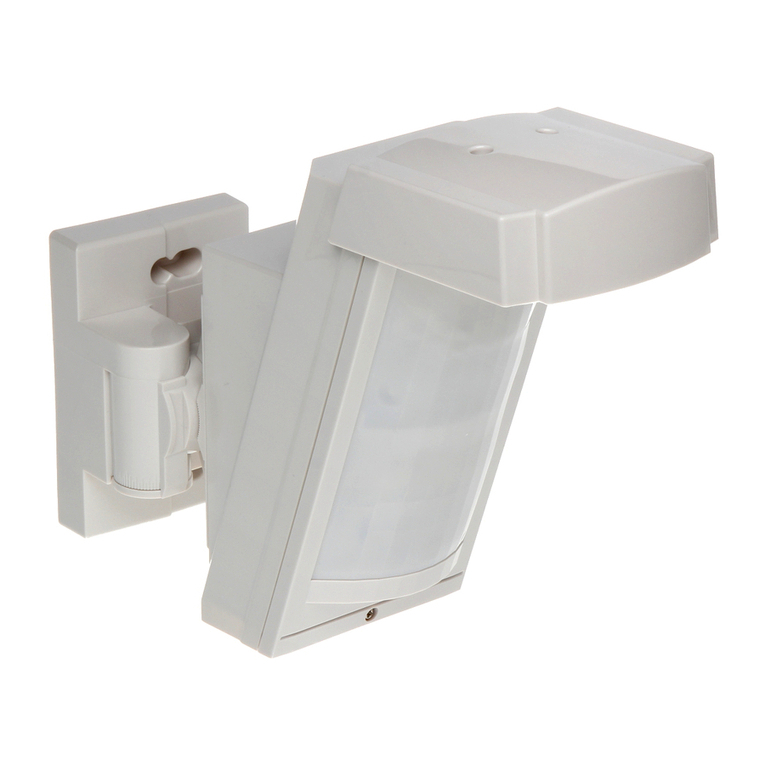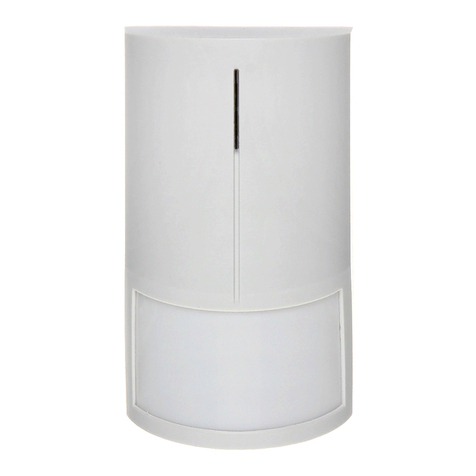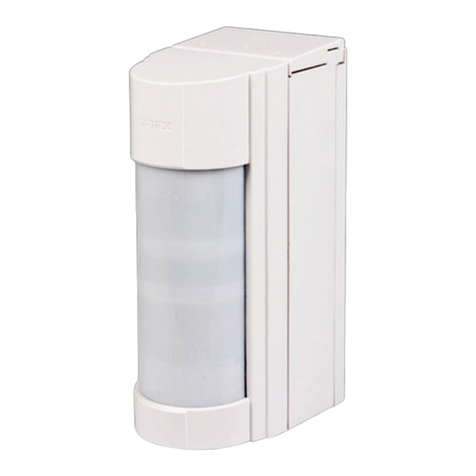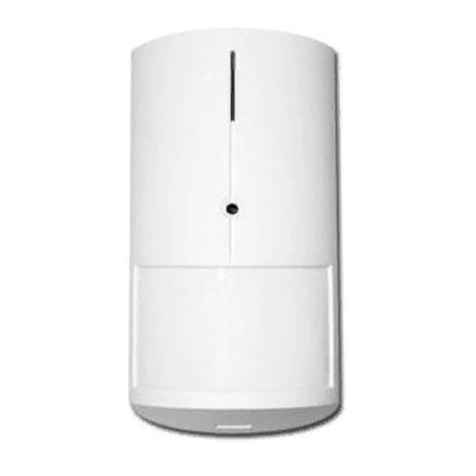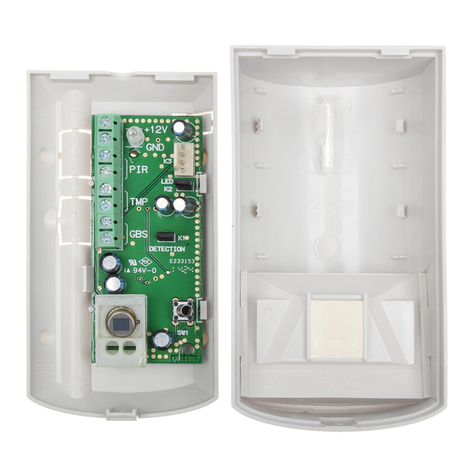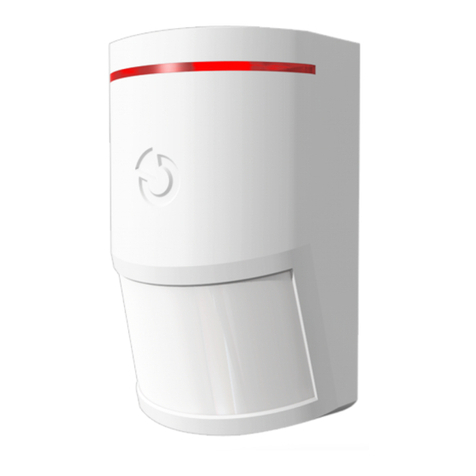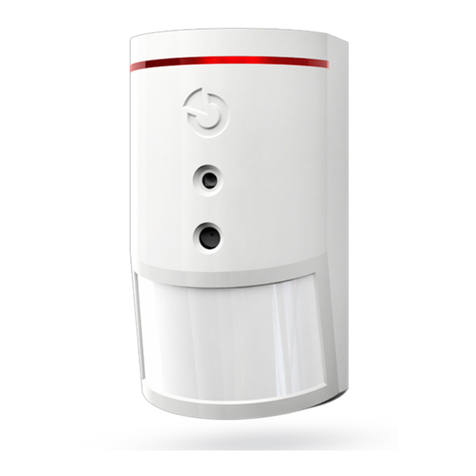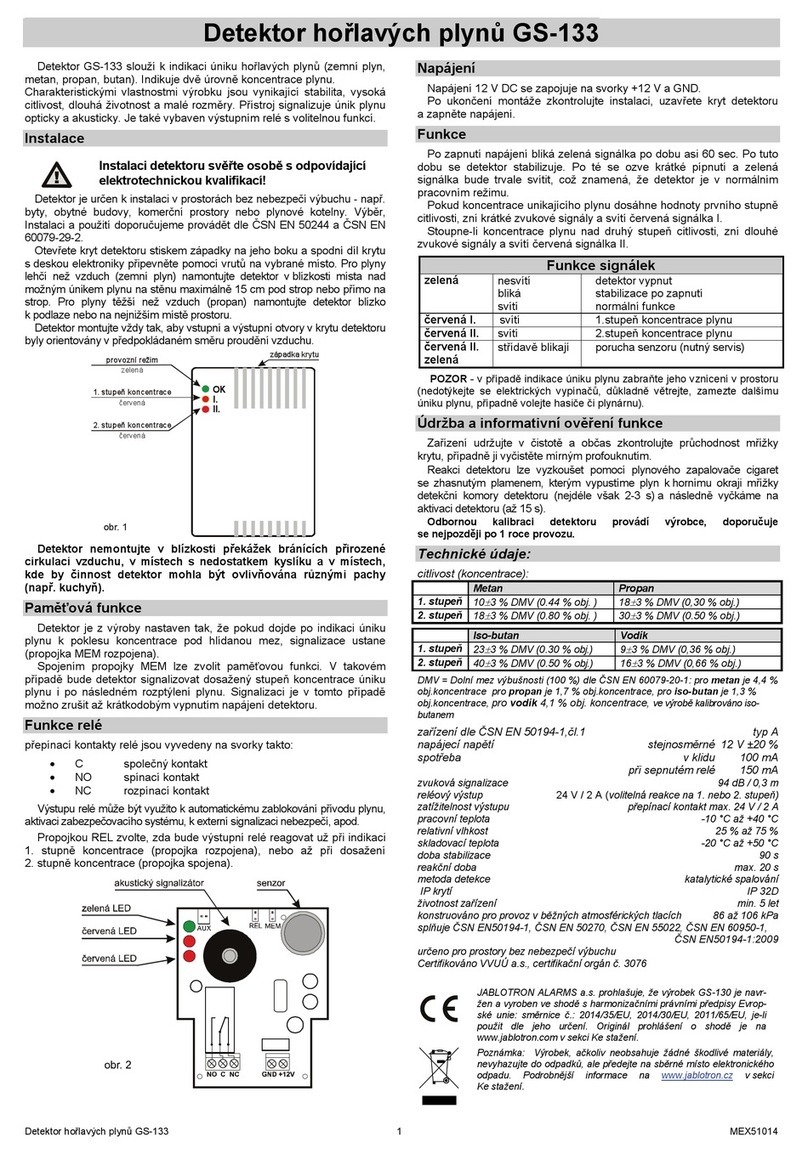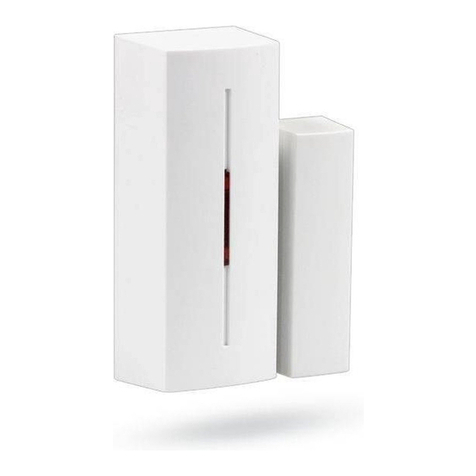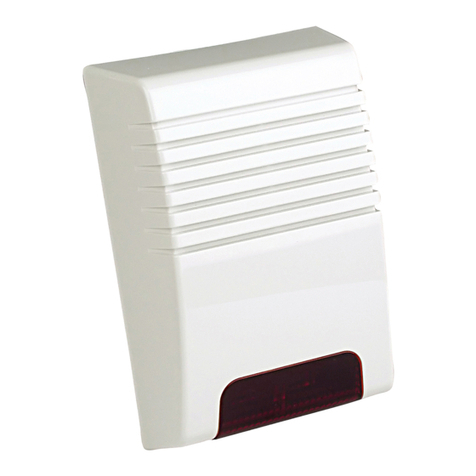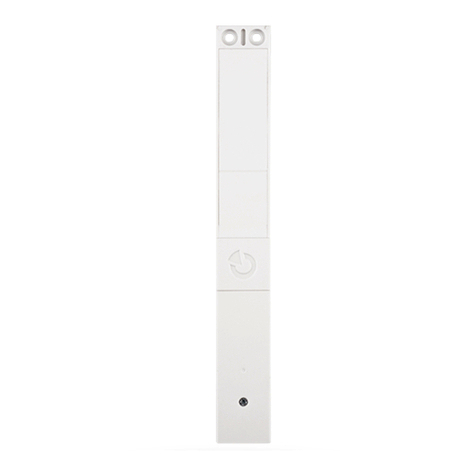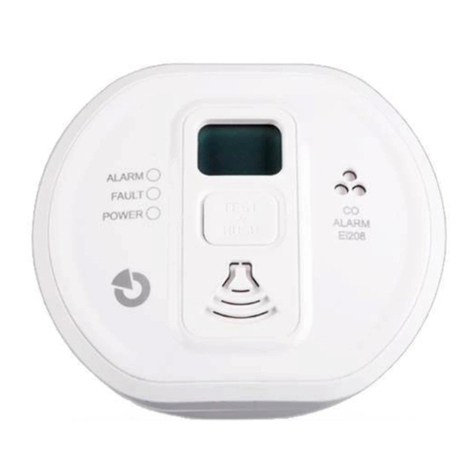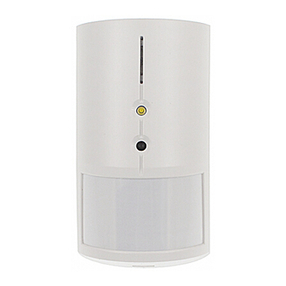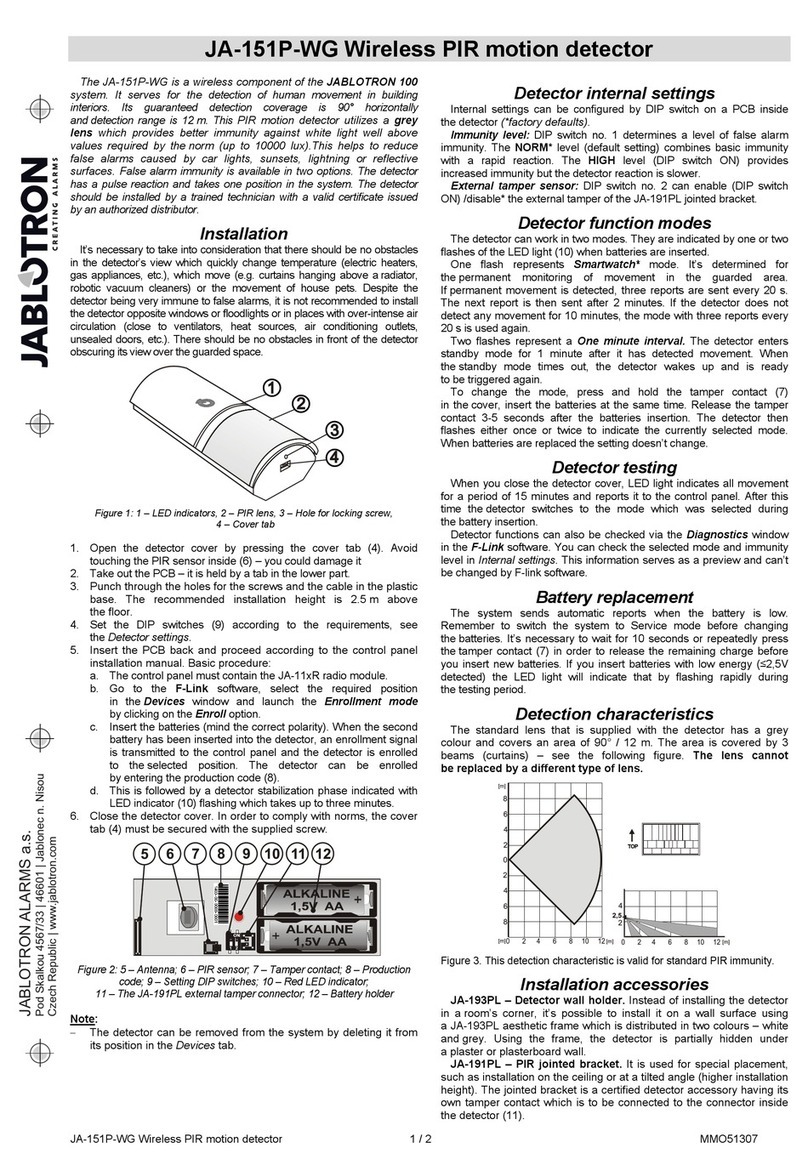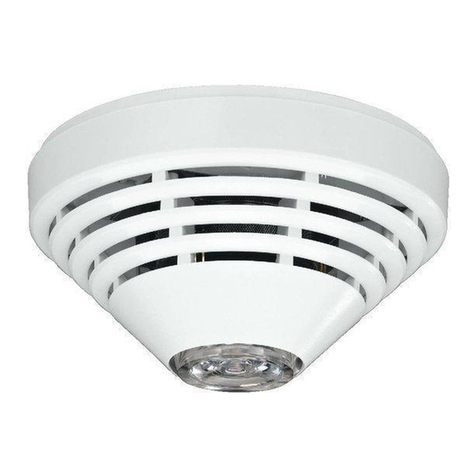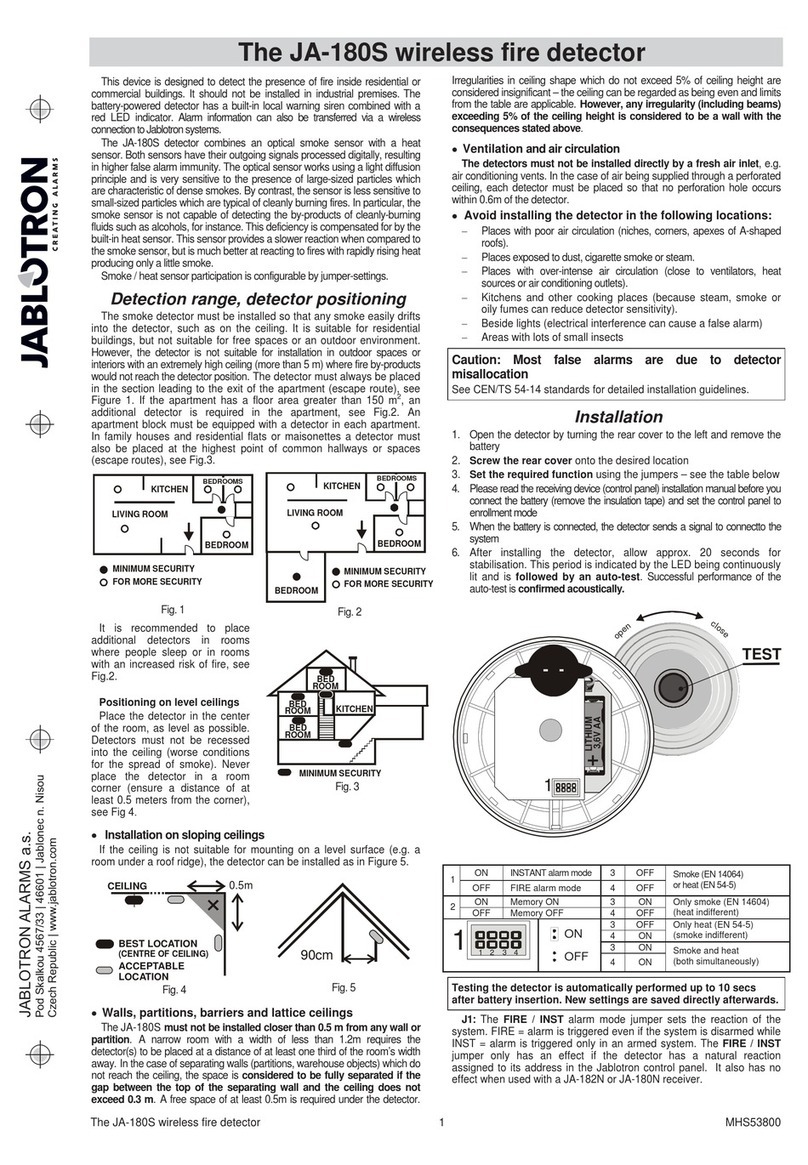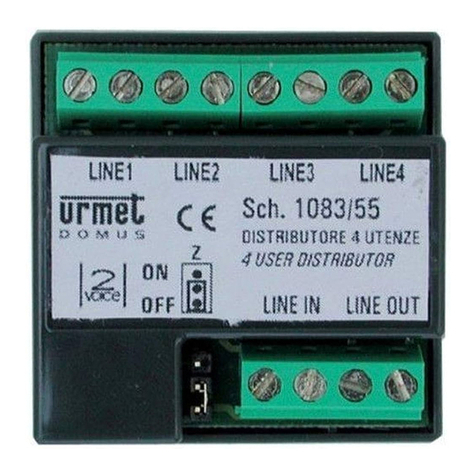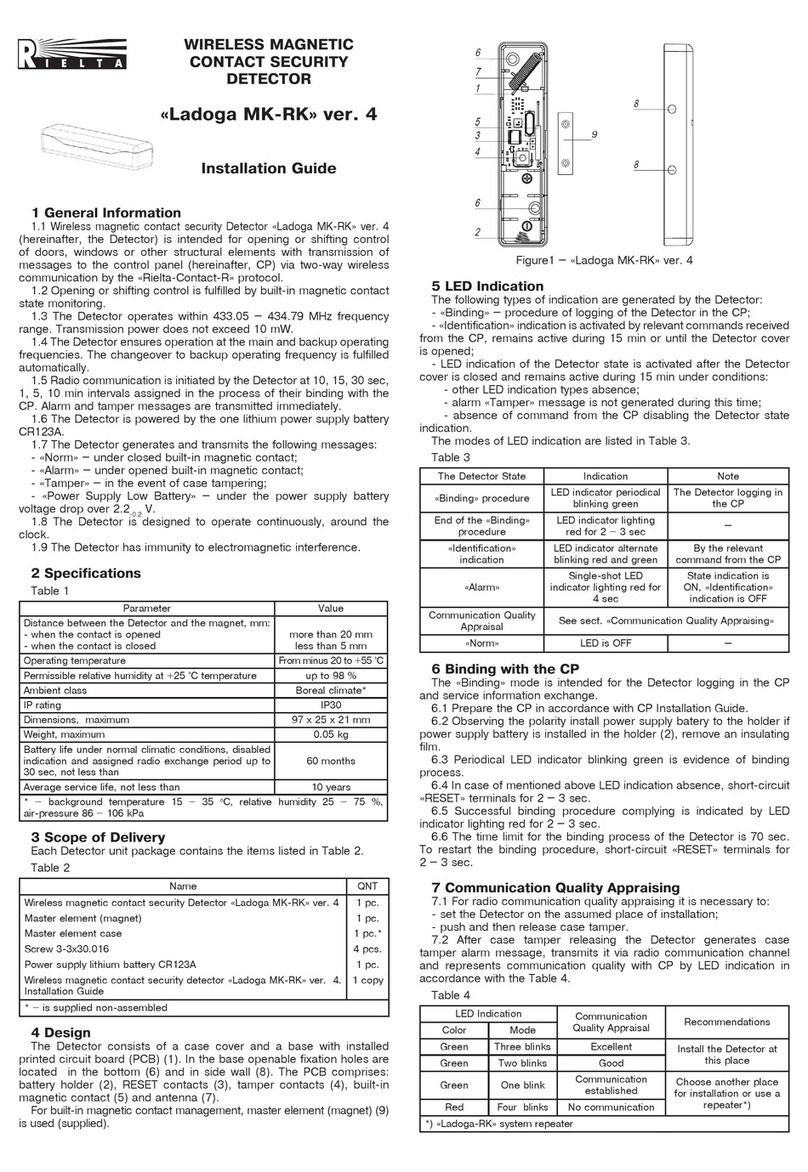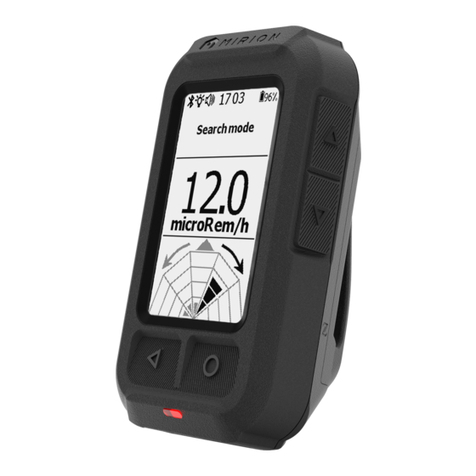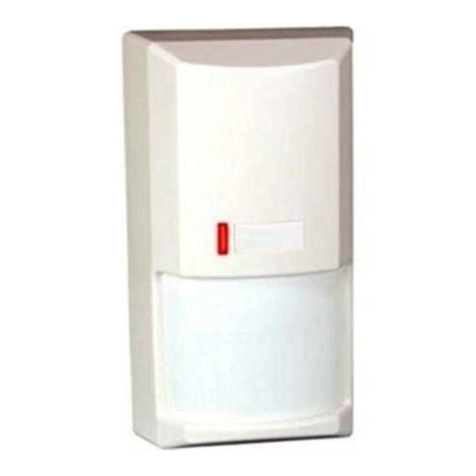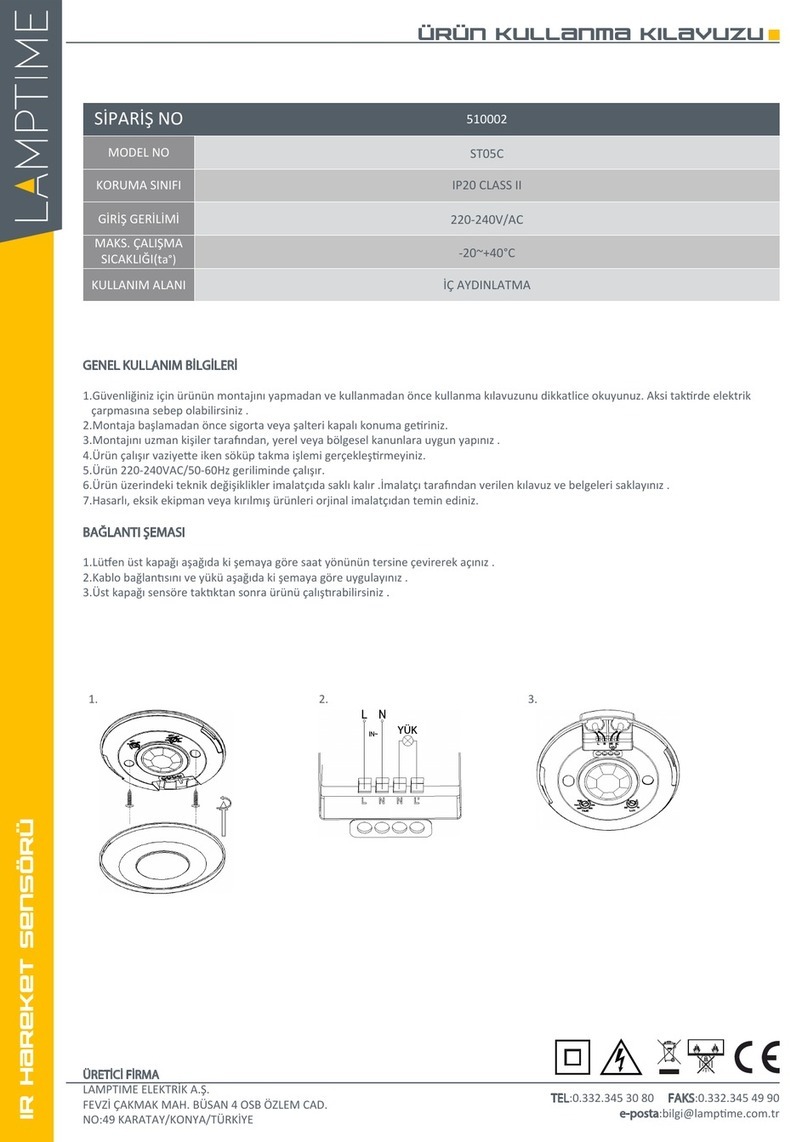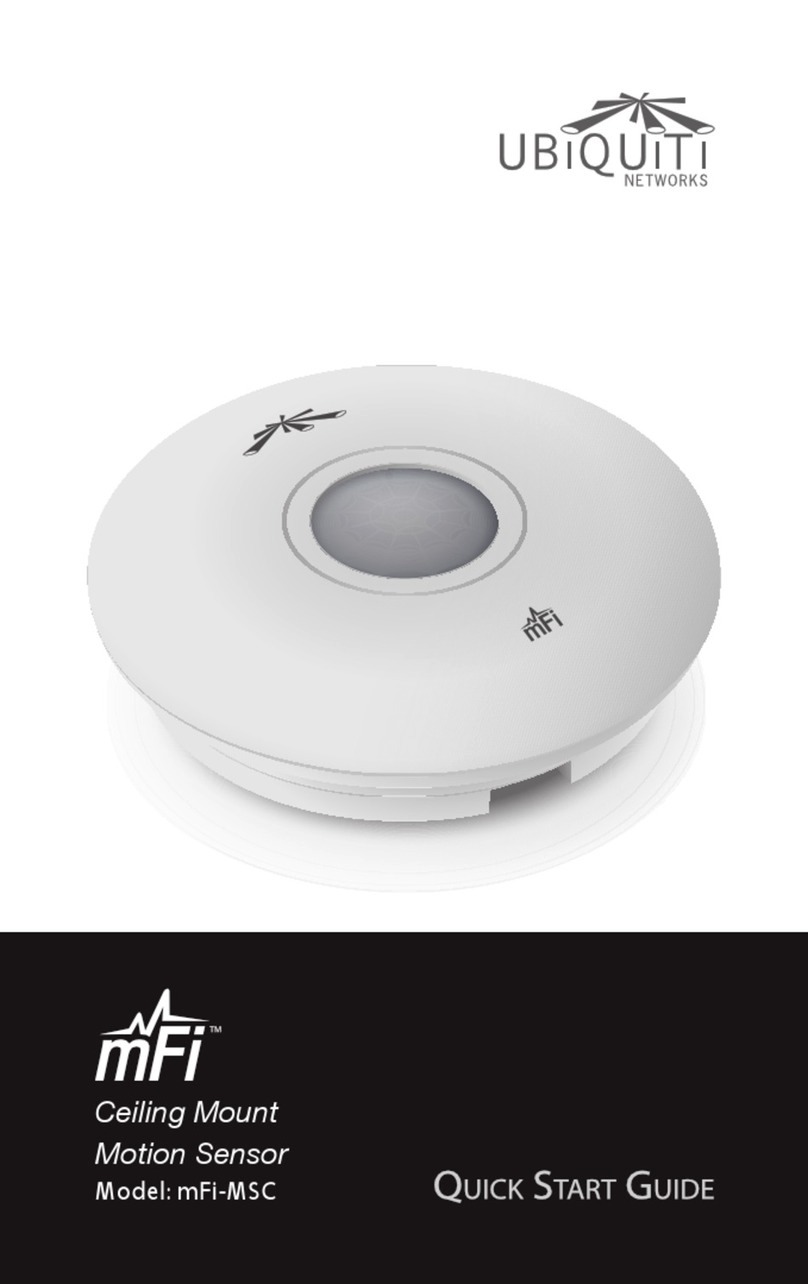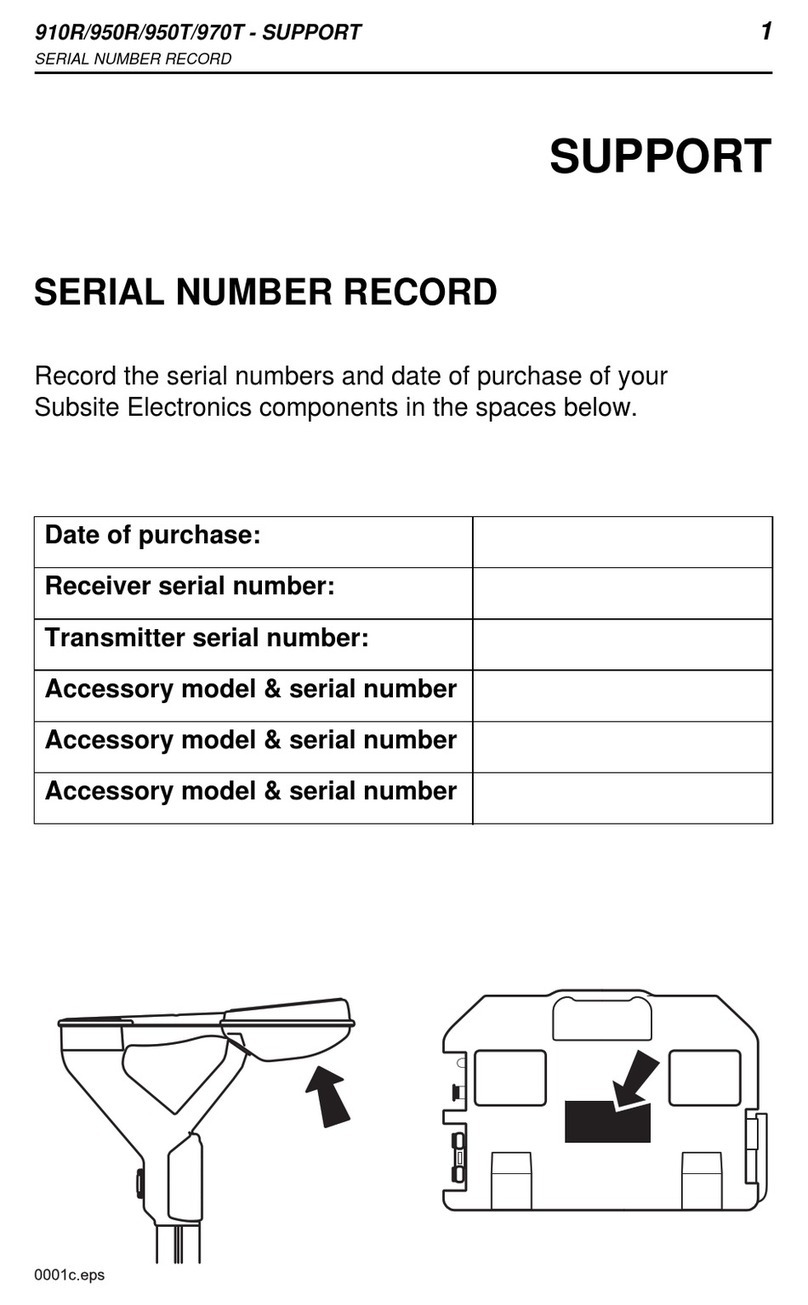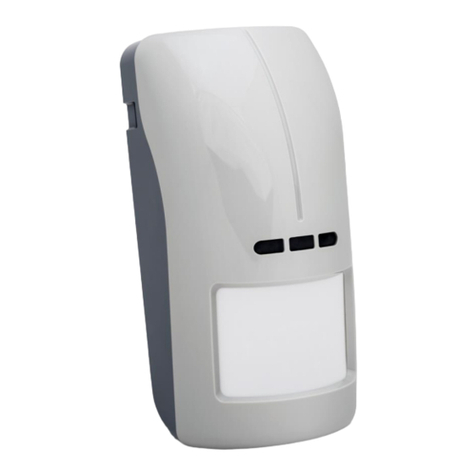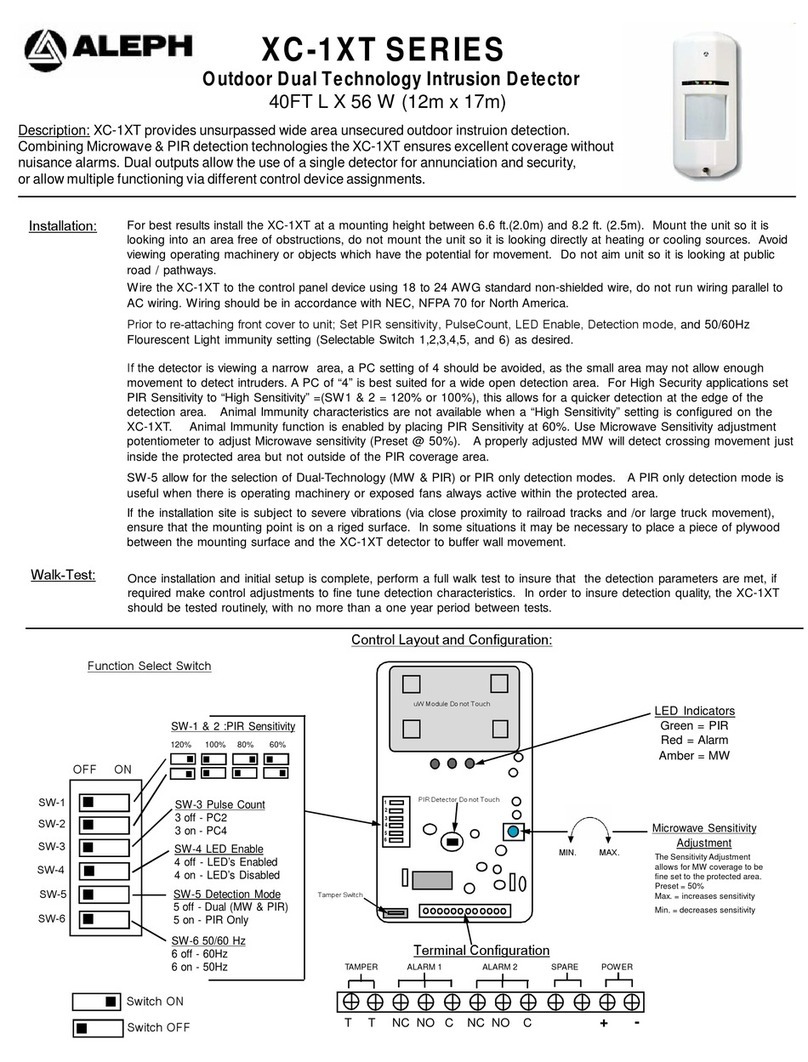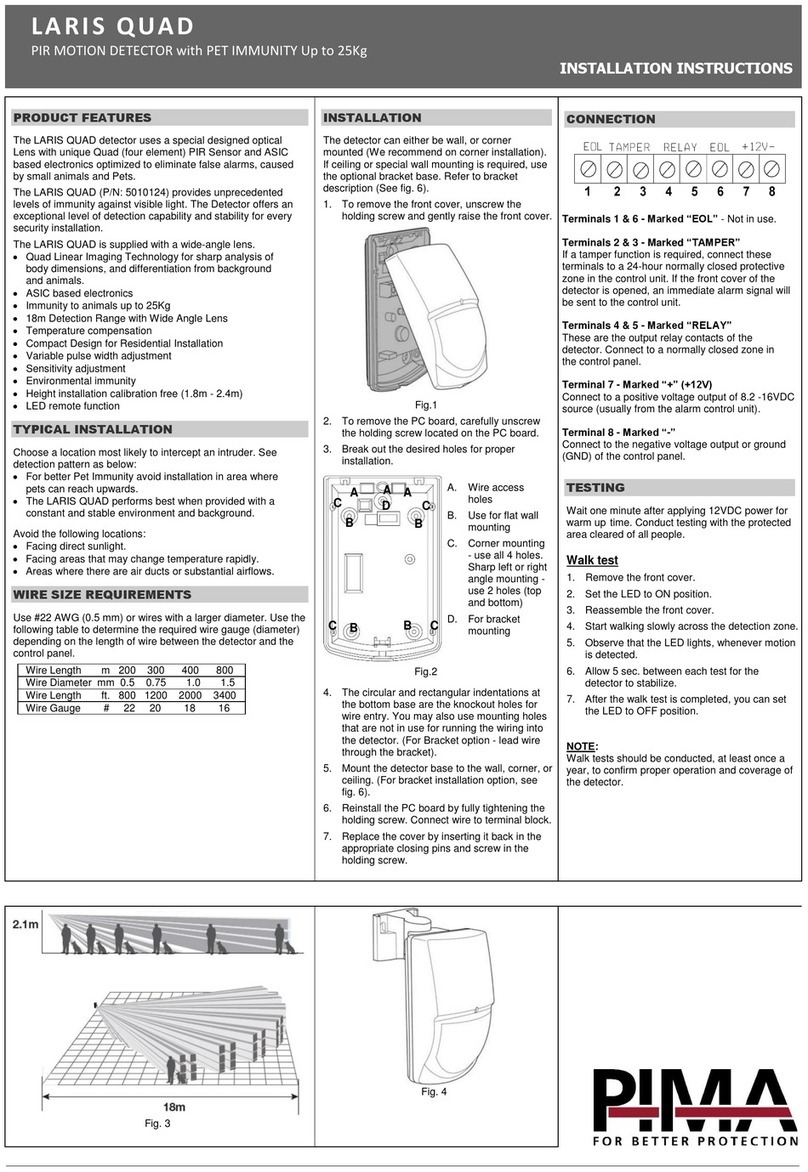
JA-80IR wireless optical barrier 1 /2 MKU52303
JA-80IR wireless optical barrier
The JA-80IR optical barrier is designed for the indication of a breach into
a protected area by crossing the IR line between the transmitter and the
receiver. The barrier is a product by Optex supplemented with
transmitters compatible with OASiS systems, this being both in the
transmitting and receiving part of the barrier. The device power supply is
ensured by high-capacity lithium batteries. The signal indicating that a
transmitter and receiver battery is low is transmitted to the control panel.
The barrier occupies two enrollment positions in the system. Barrier
activation is reported by the receiving part of the barrier (the position
where its radio transmitter is enrolled in the system). Both parts of the
barrier can send a tamper signal to the control panel. The transmitters
regularly perform automatic tests and report their status to the system.
Barrier installation
The following instructions should be observed when selecting a place for
barrier installation:
•Both units must be installed onto a stationary construction (e.g. a wall or a
thick post) at the same height and should face each other.
•The area between the barrier units must not be blocked by any bushes or
tall grass.
•There can be up to a 60 m distance between the units.
•The receiver unit must not be affected by direct sunlight.
•The units should be installed 0.7 – 1 m above the ground.
•If the IR beam is parallel to a wall, there must be at least a 1 m distance
between the beam and the wall.
•If multiple barriers are used, their IR beams should not interfere with each
other.
Fig. 1 Undesirable locations
Installation steps:
The transmitting unit (marked TRANSMITER) and the receiving unit (marked
RECEIVER) are of identical mechanical construction.
Cover Optical part Rear part Base
Cover screw Rear part screw
Fig 2Barrier parts (identical for transmitter and receiver)
1. Unscrew the rear part screws and remove the unit bases.
2. Install the bases onto the selected places, either directly on a surface
(wall) – in such a case punch two holes through the base – or onto a post
43 – 48 mm in diameter using the supplied clips and clips.
3. When installing the base, always check whether the rubber tamper contact
pin is functional.
Supports
Punch holes
M3 x 8
Screws
M4 x 30
Screws
Clip
Fig. 3 Preparation for installation onto a post
4. Enroll the transmitters into the system – see below.
5. Perform optical adjustment and unit transmitter setting.
6. Screw the upper covers back in and test the barrier functioning.
Enrolling the barrier transmitters into the system
The transmitters for wireless communication are located in the rear part
underneath the optical section. The barrier occupies two enrollment
positions in the system. Barrier activation is reported by the receiving
part of the barrier (the position where its radio transmitter is enrolled in
the system). Both parts of the barrier can send a tamper signal to the
control panel.
Always use two SAFT LSH20 lithium batteries to power the barriers
(they are included in the package). The batteries should be inserted very
carefully to avoid damage to the transmitter wiring. When the first
battery has been installed, the transmitter sends a signal which enrolls it
to the control panel (the control panel must be in enrollment mode at
that time – see the manual). Use switch no. 2 to set the required system
reaction to movement (ON = instant or OFF = delayed). Switch no. 1
should be left in the OFF position
rear tamper
connector
1 2
ON
Switch 1
ISTANT
DELAYED
2
ON
2
ON
Switch 2
1
ON
1
ON
PULSE*
S TAT U S
Vcc
TMP
INP
GND
interconnection
to a detector LED
set PULS E
*
battery not
used
Fig 4 Radio transmitter (identical for transmitter and receiver)
Setting up the optical part of the barrier
The optical part of the barrier must be adjusted so that the optical parts
facing each other are physically aligned. Both units are equipped with
adjusting elements for the adjustment of direction and a view-finder for
precise adjustment. The unit opposite the one you want to adjust must be in
the centre of the aiming cross and the cross must be in the centre of the
view-finder.
viewfinder
View through
the view-finder
correct
incorrect
Fig. 5 Setting up the optical part
When the setting is complete, it is followed by adjustment of the receiver
unit:
Connect a voltmeter to the ter-
minals and select the 0-10V range.
Watch the LED on the right
Fig. 6 setting up using a multimeter

